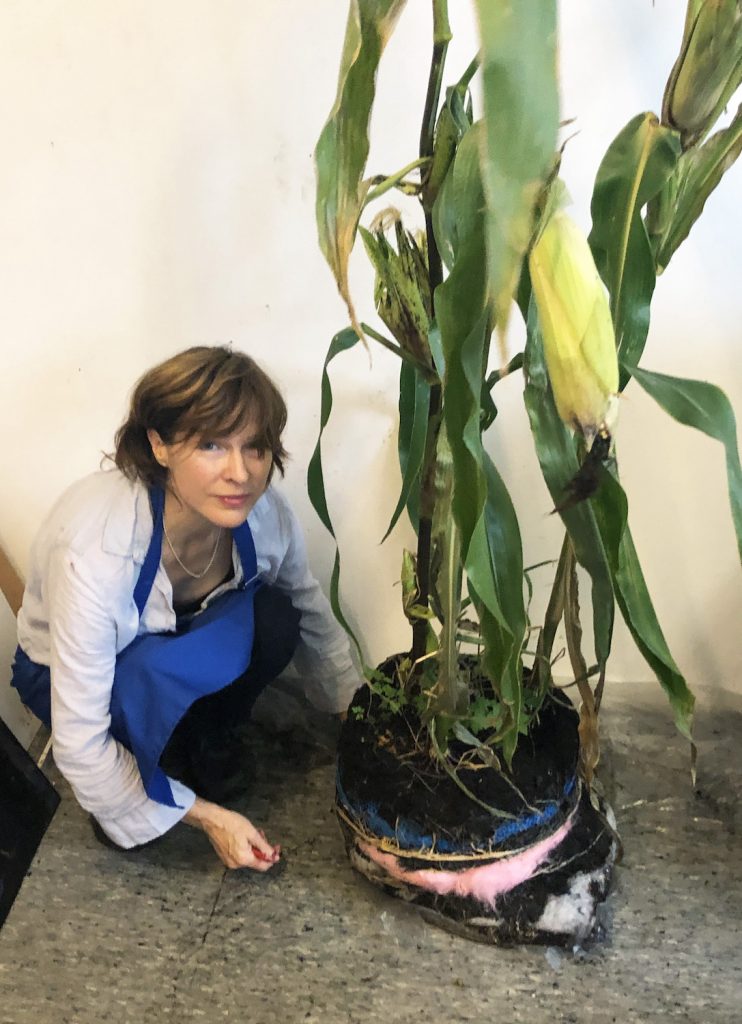Weaving with Nature
For TLmag35, Brussels-based journalist Sarah Schug, wrote about two designers who are pursuing innovative techniques in weaving using natural materials like pine needles & roots
“There is an amazing land of opportunity around us. With today’s mass production and industrialization, we have lost track of what is right in front of our eyes. We do not even know what plants can be useful for anymore”, says Latvian designer Tamara Orjola. Inspired by a childhood spent in pinewoods collecting herbs in forests and resin-turned-amber washed up at the beach, she has dedicated her artistic practice to creating stylish, high-end furniture pieces from what she calls “forest wool”, a unique textile woven with yarn made out of pine needles.
The Rotterdam-based artist is part of a wider trend: an increasing number of contemporary creatives are rediscovering ancient craft methods and striving for a closer connection with the natural world. In today’s age of the Anthropocene, the relationship between man and nature is generally a strained one, preoccupied by climate change and the earth’s continuous human-caused demise. It comes as no surprise then, that at the same time there is a new-found consciousness emerging about the preciousness of nature, which artists are manifesting in an endless number of ways.
Some artists see their practice as a form of activism, including Orjola, who goes so far as to label her project a protest. “I wanted to protest in a hands-on and resourceful way against an abusive design industry, shining a light on the value of local resources, and demonstrating their different possible applications.” With “forest wool”, she uses a sustainable source of fibres, giving pine needles, a by-product ignored by the timber industry, a new life. Although she has successfully created other materials with pine needles, such as paper, she recently made the decision to focus solely on textiles: “It is the most urgent; the textile industry is one of the most polluting right after the oil industry,” she explains.
While weaving has become highly industrialized, its origins were already closely intertwined with nature. One of the oldest surviving craft skills in the world, it can be traced back more than 20,000 years, and even before humans made textiles out of plant-based flax fibres for the first time, they braided baskets from bast fibres.
German-born, Amsterdam based artist Diana Scherer, is returning to roots in a literal way. With a technique she describes as “root-weaving”, she makes use of the intricate dynamics of plant root systems in order to create a textile-like material that builds the basis for her captivating artworks. Blending natural and human-made elements, her work reflects an intimate connection with plants: “It is a collaboration, a combination of my manipulations and their own will. They have unbelievable intelligence and communication skills. What is very important is to choose the right plant, one that participates. And I have to keep it happy – it needs enough space, water and nutrients.”
It took Scherer a full year of trial and error to develop her ground-breaking technique, persevering despite discouragement from the root biologists she consulted throughout the process. “Academic plant root experts told me it would never work. But when you approach something with a new artistic spirit and perspective, new possibilities open up”, she says. Now, students are writing their master theses on the topic, and, together with researchers, there is an effort to find out if Scherer’s discoveries can lead to the development of a widely used sustainable material. These fertile alliances between artists and scientists are growing. Orjola is currently raising funds to team up with experts to develop a prototype that could be produced on a large-scale level.
Despite it not being the original intention, both artistic practices might, in the end, lead to the creation of a useful ecological material. But even if that is not the outcome, what both Scherer and Orjola have already successfully achieved, is raising an awareness about nature, plants and their hidden powers as a design tool, and showing that artistic interventions can create meaningful relationships between humans and nature.
tamaraorjola.com
@tamaraorjola
dianascherer.nl
@diana_scherer













